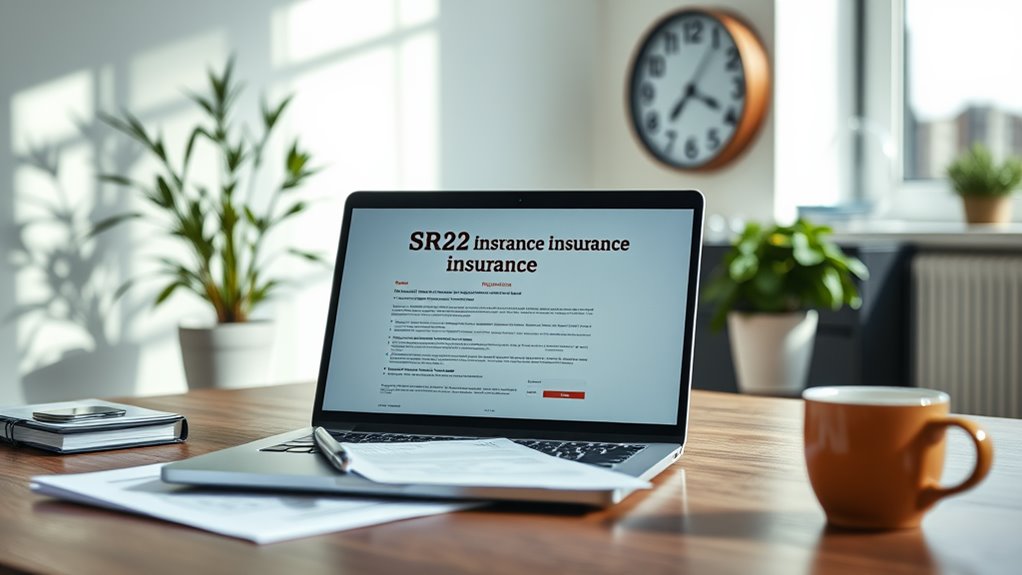Filing your SR22 insurance online can be a quick and manageable task. Start by choosing a provider that offers SR22 filings and gather necessary information like your vehicle's VIN and Social Security number. Once you submit your application, the insurer takes care of filing with the DMV. However, it's essential to compare quotes to guarantee you're getting the best deal. Let's explore how to navigate this process efficiently.
If you need to file SR22 insurance, you can do it quickly and easily online. This form is vital for proving your minimum liability insurance coverage to the DMV, especially after certain violations like a DUI or repeated offenses. To get started, contact an insurance provider that offers SR22 filings, as not all companies provide this service. Many insurers have dedicated SR22 departments that can assist you through the process.
Once you've found a suitable insurer, you can initiate the process online, which is often the fastest option available.
Initiating the SR22 filing process online is typically the quickest and most efficient way to get started.
When filing, you'll encounter different types of SR22 forms, including operator/non-owner, owner, and operator/owner policies. If you don't own a vehicle but still need coverage, the operator/non-owner policy is ideal for you. Conversely, if you only drive your own car, the owner policy suits you best. If you occasionally rent or use someone else's vehicle, the operator/owner policy is the right choice. Understanding these variations is critical to selecting the right SR22 for your situation.
Filing an SR22 typically costs around $25, but remember that your insurance premiums may increase considerably as a result of needing this coverage. Most states require you to maintain the SR22 for at least three years, so be prepared for this duration. Additionally, AAMVA's electronic SR22/26 application automates filings, which can make the process more efficient.
If your SR22 insurance lapses, your insurer must notify the state, which could lead to a suspension of your driving privileges. As a result, make sure you stay on top of your payments and coverage.
The online application process is straightforward. You'll usually need to provide your vehicle's VIN, your address, and your Social Security number. It's wise to compare quotes from various providers to find the best rates. Confirm to choose a reputable insurer that specializes in SR22 policies, as their expertise can make a considerable difference in your experience.
Many states have automated electronic systems for filing and processing SR22 forms, which helps speed up the process and reduce errors. Going paperless isn't only efficient but also minimizes delays that could affect your driving status.
However, it can take some providers over 30 days to process your SR22 filing, so don't wait until the last minute to get started.
Each state has its own minimum liability insurance requirements for SR22 policies, so familiarize yourself with your state's regulations. Depending on the severity of the violations, the filing periods for SR22 can range from one to five years. It's important to stay informed about these requirements, as they vary greatly.
Once you no longer need an SR22, contact your insurer to file an SR26 for cancellation. This step is necessary to avoid any unnecessary complications with your driving record.
Conclusion
Filing your SR22 insurance online doesn't have to be intimidating. While you might worry about the complexity or costs, remember that many providers offer straightforward applications and competitive rates. By comparing quotes, you can find an affordable option that fits your needs. Plus, once your insurer submits the SR22 form to the DMV, you can drive with peace of mind, knowing you're compliant. Take the leap—getting your SR22 filed online is quick and hassle-free!





